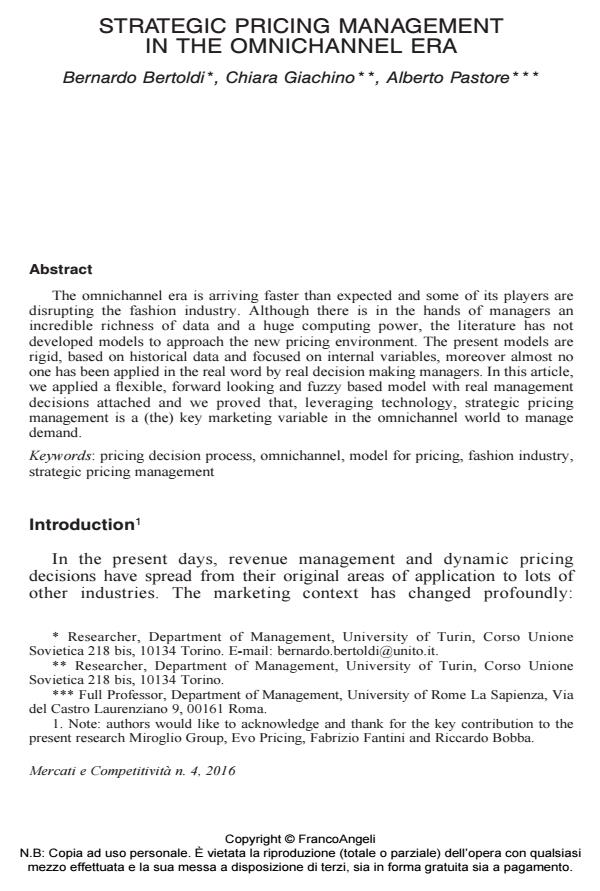Strategic pricing management in the omnichannel era
Titolo Rivista MERCATI & COMPETITIVITÀ
Autori/Curatori Bernardo Bertoldi, Chiara Giachino, Alberto Pastore
Anno di pubblicazione 2016 Fascicolo 2016/4
Lingua Inglese Numero pagine 22 P. 131-152 Dimensione file 241 KB
DOI 10.3280/MC2016-004008
Il DOI è il codice a barre della proprietà intellettuale: per saperne di più
clicca qui
Qui sotto puoi vedere in anteprima la prima pagina di questo articolo.
Se questo articolo ti interessa, lo puoi acquistare (e scaricare in formato pdf) seguendo le facili indicazioni per acquistare il download credit. Acquista Download Credits per scaricare questo Articolo in formato PDF

FrancoAngeli è membro della Publishers International Linking Association, Inc (PILA)associazione indipendente e non profit per facilitare (attraverso i servizi tecnologici implementati da CrossRef.org) l’accesso degli studiosi ai contenuti digitali nelle pubblicazioni professionali e scientifiche
The omnichannel era is arriving faster than expected and some of its players are disrupting the fashion industry. Although there is in the hands of managers an incredible richness of data and a huge computing power, the literature has not developed models to approach the new pricing environment. The present models are rigid, based on historical data and focused on internal variables, moreover almost no one has been applied in the real word by real decision making managers. In this article, we applied a flexible, forward looking and fuzzy based model with real management decisions attached and we proved that, leveraging technology, strategic pricing management is a (the) key marketing variable in the omnichannel world to manage demand.
Parole chiave:Pricing decision process, omnichannel, model for pricing, fashion industry, strategic pricing management
- Developing Successful Global Strategies for Marketing Luxury Brands Chiara Giachino, Bernardo Bertoldi, Augusto Bargoni, pp.214 (ISBN:9781799858829)
- Entrepreneurial Essence in Family Businesses Bernardo Bertoldi, pp.31 (ISBN:978-3-030-63741-5)
Bernardo Bertoldi, Chiara Giachino, Alberto Pastore, Strategic pricing management in the omnichannel era in "MERCATI & COMPETITIVITÀ" 4/2016, pp 131-152, DOI: 10.3280/MC2016-004008